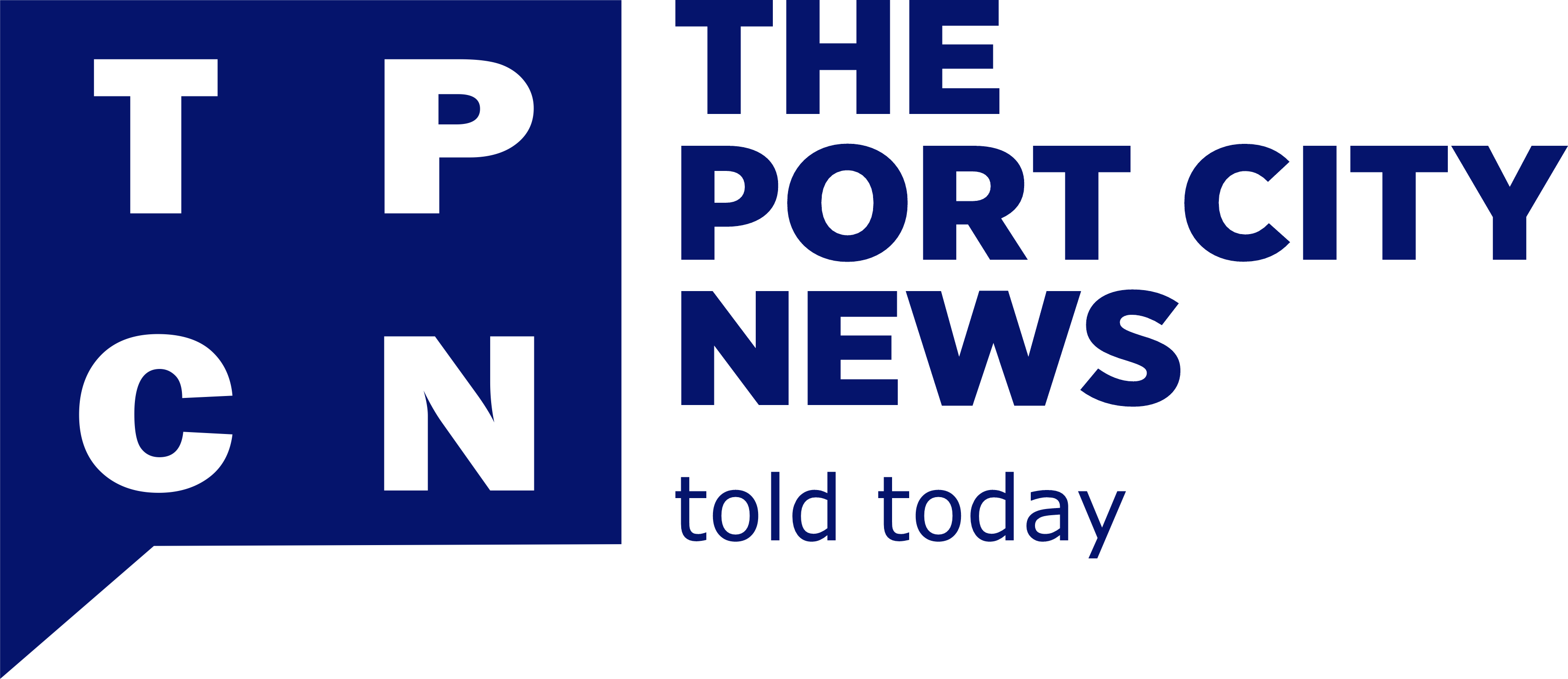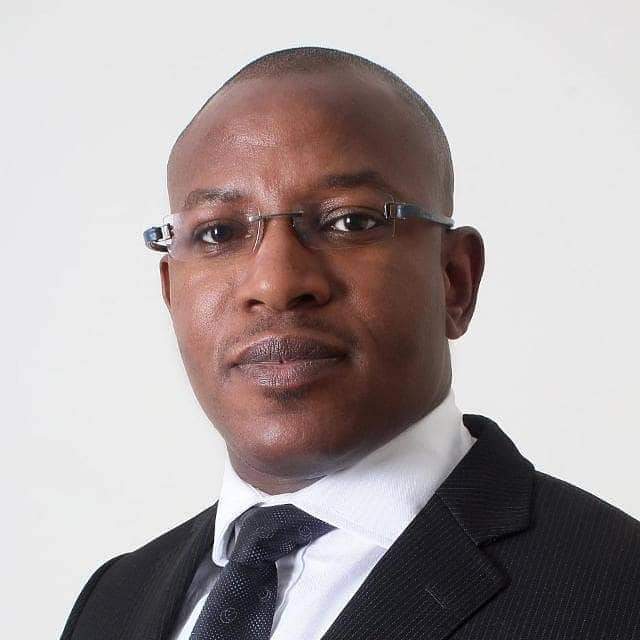Dr Jekwu Ozoemena
Nigeria, November 2014 (Prelude)
In a speech she delivered at the third annual International Institute for Finance (IIF), African Financial Summit, hosted by Access Bank Plc in Lagos in November 2014, the then Coordinating Minister for the Economy and Minister of Finance, Dr. Ngozi Okonjo-Iweala, stressed the need for Nigeria and other countries on the continent to adopt belt-tightening measures in order to cushion the effects of the dwindling prices of crude oil on their economies.
The crude oil price shock had started by mid-2014, so this warning was very much in order, and its imperative evident to all those who had a basic understanding of the alternating phases of economic growth and decline known as the boom and bust cycle.
Busts often tend to telegraph their occurrence based on three factors; the laws of demand and supply, the availability of capital and future expectations. In economic theory, the next economic bust is inevitable because expanding asset classes that come with a boom always lead to a bust. According to the National Bureau of Economic Research (NBER), globally, there have been 29 cycles in the last 145 years, roughly one every five years. On average, the booms last 38.7 months while the busts last 17.5 months.
Because busts are inevitable, sovereigns plan towards mitigating and reducing the impact of an impending bust through the major tools that affect macroeconomic goals; Fiscal and Monetary Policy.
Fiscal Policy is the underlying strategy reflected in a government’s annual budget, comprising strategies for government tax and revenue generation, expenditure (spend on goods, services and transfer payments) which in turn, impacts on the size of both the private and public sector and overall spending therein (and by extension aggregate GDP), and ultimately the long-term economic growth of the country.
Like Alan Greenspan (former Federal Reserve Chairman) noted in a speech in 2015, “If countries don’t tackle fiscal problems, monetary policy will become utterly irrelevant”.
Monetary Policy on the other hand comprises tools used to implement the aforementioned fiscal policy. Usually driven by the country’s Central Bank, and Monetary Policy Committee, it includes the management of Money Supply, Inflation, Interest and Exchange rates. The key Monetary Policy instruments include; Cash Reserve Requirement (CRR) of Deposit Money Banks, Liquidity Ratio Requirement, Open Market Operation (OMO), Moral Suasion, Monetary Policy Rate (MPR), Credit Control and Price Control.
Nigeria, May 2015 (Processional)
Post inauguration of the PMB administration on May 29, 2015, despite the earlier telegraphed impending bust, a number of actions (or inactions) accentuated the ultimate impact of the brewing bust.
There was no new fiscal plan other than what the previous administration left behind. The PMB administration then took 6 months to appoint its cabinet, consequently, there was effectively no one in place to drive and coordinate the fiscal policies.
The result was that the Central Bank of Nigeria had to step into the gap and spend six crucial months attempting to use Monetary Policy instruments to solve fiscal problems. The country’s debt profile increased from US$9.4 billion external and N10.1 Trillion internal in March 2015 (approximately US$60.4 Billion in total) to over US$11 Billion external and N11 Trillion internal (approximately US$66 Billion) as at October 2015.
Without an overarching Fiscal Policy direction, no one seemed to be bothered about the country’s increased public debt against a significant drop in earnings from crude oil sales.
By the Fourth Quarter of 2015, GDP had slowed to 2.11%, a contraction that continued into the fourth quarter of 2016.
The impact was accentuated because Nigeria depends on petrodollars for 70% of state revenues and 90 per cent of export earnings, which naturally led to a severe foreign currency shortage. This and the escalating borrowing encouraged increased inflation (at 9.4% as at late 2015 from 8.2% in 2014 to 18.5% by 2016).
The high inflation led to a devaluation / depreciation of the Naira in relation to that of the country’s trading partners. This was naturally accompanied by an increase in interest rates.
Exchange rates, inflation and interest rates are highly co-related. Higher interest rates encourage foreign capital inflows (to invest in local currency debt instruments) and cause exchange rates to rise. As a corollary, lower interest rates drive down exchange rates.
The high interest rates in 2015 were partly driven by the Monetary Policies deployed by the CBN for exchange rate targeting to manage the amount of Naira chasing the available US Dollars. This included a CRR at 25% (reduced from 31%), very high compared to other Emerging Markets peers and astronomically high compared to developed Markets.
With the steep drop in the price of crude (and by extension Nigeria’s US$ export earnings) against increasing import requirement, the country was increasingly spending more on importation than it earned from export earnings. This excess demand for FX naturally put the Exchange rate and foreign reserves under severe pressure and led to the CBN’s FX “demand management” measures.
These demand management measures led to JP Morgan’s removal of Nigeria from its Emerging Market’s bond Index, signalling a loss of confidence in Nigeria’s currency and as such a dampening of Foreign Investor’s enthusiasm for Nigeria as a destination for foreign capital.
Bernanke in his remarks before the Japan Society of Monetary Economics in Tokyo (May 31, 2003) noted that “it is important to recognize that the role of an independent Central Bank is different in inflationary and deflationary environments. In the face of inflation, which is often associated with excessive monetization of government debt, the virtue of an independent Central Bank is its ability to say ‘no’ to the government”.
Consequently, when a country faces a potential inflation or hyperinflation environment, the markets would want to know that even when political decisions / choices are necessary, they are informed by the Central Bank or / and a dully appointed Independent Monetary Policy Committee.
Unfortunately, at this point the President of Nigeria publicly and consistently stated that his economic team was yet to convince him that the Naira should be devalued. This gave stakeholders the jitters…it signalled a Central Bank and Monetary Policy Committee that was unable to say ‘no’ to the President and gave the impression (rightly or wrongly) that the President had usurped the role of both the Central Bank of Nigeria and the Monetary Policy Committee.
Consequently, by the close of 2015, Nigeria’s economy had slowed significantly. Annual real GDP growth declined to 2.7% year-on-year from 6.2% year-on-year in 2014.
February 2016 (Sonata I)
As if the drop in oil price was not sufficient woes, in February 2016, shortly after Ministers were appointed, the PMB administration announced that it had revoked oil pipeline protection contracts and amnesty payments to repentant Niger Delta militants. This refers to a 2009 earlier agreed amnesty program that in exchange for cash, stopped Niger Delta Militants from blowing up crude pipelines. The then major opposition party had criticized this program during the campaigns and now in government, had initially insisted on cutting the amnesty by two-thirds and limiting cash payments in the face of dwindling revenues.
Between February 2016 when the amnesty program was revoked and August 2016 when it was reinstated, Nigeria recorded over 4,000 pipeline vandalisation activities, crippling the country’s production capacity.
It also didn’t help that by February 2016, the 2016 Budget (tagged “Budget of Change”) earlier presented to the National Assembly, was found to be grossly padded, sand-bagged and fraught with errors such that the National Assembly concluded that it had to be withdrawn and represented. The Presidency blamed the errors and padding on “over-ambitious civil servants” in the budget office and promised a probe.
It was also evident that the newly appointed ministers did not have enough time to thoroughly review their Budget submissions before the final presentation to the joint session of the National Assembly on December 22, 2015.
For what was meant to signal the policy direction of the new government, this sent out very negative signals to the global markets.
March 2016 (Sonata II)
The National Assembly subsequently passed the budget on March 23, 2016 but the President withheld his assent and returned the document to the National Assembly, this time claiming that the legislators had smuggled in new projects and removed critical items proposed.
May 2016 (Sonata III)
Finally, after the warring factions reconciled, the 2016 “Budget of Change” was assented to by the President in May 2016, underpinned by a number of fiscal policy initiatives;
A transition from the Joint Venture Cash Calls with the major international oil companies to a new cost recovery funding mechanism; the implementation of the Treasury Single Account; the establishment of an Efficiency Unit to cut costs and block leakages; and the implementation of the Integrated Payroll Personnel System (IPPIS) across MDAs etc.
Despite these bold initiatives, the 2016 Budget was fundamentally flawed;
The N6.06 Trillion Budget had an oil price benchmark and crude oil production of US$S38 per barrel and 2.2 million bpd respectively. Similarly, the exchange rate was left at N197/USD1.
At the time, I noted that oil production of 2.2 million barrels per day was unrealistic, especially in the face of potential shutdowns in the Niger-Delta as well as possible shutdown of the offshore / swamp oil facilities. This should have been reflected in a reduction in not just the projected oil revenue but non-oil revenue as well given the attendant possibility of a decline in oil related taxes as well as Customs Revenue (due to the corollary of availability of FX to imports).
For something that had not been tested, the assumption that Government’s new Efficiency Unit (which in conjunction with an effective implementation of GIFMIS and IPPIS) was expected to reduce overheads by at least 7%, personnel costs by 8% and other service wide votes by 19% was extremely ambitious. With this, a projected N1.51 Trillion Independent Revenue, given its materiality to the budget, and the fact that it was described as savings from these reforms in MDAs was entirely suspect.
In summary, the Budget was uninspiring and lacked confidence.
June 2016 (Recessional)
Despite the introduced FX demand management measures, and at the risk of totally depleting Foreign Reserves in defense of the exchange rate, PMB (through the CBN) eventually allowed the exchange rate to adjust downwards. But this was too little too late as the delay in devaluing the Naira significantly impacted the ability of businesses to access foreign currency for vital imports.
Consequently, by the first half of 2016, Nigeria fell into a technical recession as its finances were hit with both low oil prices and the declining crude output. The contraction represented weaker inflation-induced consumption demand, an increase in oil pipeline vandalism, significantly reduced foreign reserves and a concomitantly weaker currency.
From its 2.13 million bpd production capacity in 2015, according to Ibe Kachikwu (Minister of State for Petroleum), these vandalisations cost Nigeria between 700,000 to 800,000 barrels of crude per day.
So it did not come as a surprise when by the fourth quarter of 2016, Nigeria’s economy suffered its first annual contraction in 25 years as growth shrank for the fourth consecutive quarter.
In fact, even before the Nigeria Bureau of Statistics’ official growth figures were released in August 2016, it was already clear that Nigeria had slipped into a recession as the economy contracted 2.06% between April and June 2016, resulting in two consecutive quarters of declining growth (the usual definition of recession).
Other than the evident problems in the oil sector, the non-oil sector contracted 0.2% year-on-year, it’s worst performance since 1985.
June 2017 (Cantata)
Oil pipeline vandalizations ceased with the August 2016 reinstatement of the amnesty program for ex Niger Delta militants. This lead to increased production volumes (and with the recovery in oil prices) and positive growth for two consecutive quarters.
The non-oil sector (particularly the manufacturing sector) also reacted positively with the attendant improved FX liquidity.
It was that simple.
Nigeria came out of the recession.
So why hasn’t this recovery translated to improved government revenues and quality of life for the citizenry?
2018 (Aria)
Various flawed fiscal policy decisions over the last four years have led to an existential debt service and recurrent expenditure crisis.
Interestingly, we can no longer blame a crash in oil price for our malaise. In 2018, crude oil sold at an average of US$70 per barrel, well above the US$50.50 per barrel 2018 budget oil price benchmark.
Growing Debt and Debt Service
External debt increases a country’s (in this case, Nigeria’s) vulnerability to economic shocks, particularly the commercial part of the county’s external debt which has increased from US$1.5 Billion in June 2015 to US$11.6 Billion as at December 2018, a 673% increment.
This commercial debt is also less flexible than multilateral debt in terms of renegotiation and much more expensive in terms of debt service.
Increasing Non Debt Recurrent Expenditure
Cost of Government bureaucracy also increased significantly and despite the pledge to plug leakages, Nigeria retained the obnoxious spending habits of oil rich countries; profligate government expenditure, the irrationally expensive bureaucracy, irrational salaries for political office holders and the various subsidies on consumption.
Fuel Subsidy / Under Recovery
Prior to 2015, fuel subsidy payment in Nigeria used to shadow the international price of crude oil. Because the country imports almost all its PMS, if oil price increases and the regulated local fuel pump price is held constant, then fuel subsidy increases to take up the slack.
On May 11, 2016, the PMB administration increased fuel price from N87 per litre to N145 per litre. Within this period, Nigeria’s fuel consumption also increased from about 30 million litres a day in 2015 to about 65 million / 50 million litres a day. The implication is that despite the drop in crude oil price and increase in fuel pump price, Nigeria has managed to increase annual fuel subsidy payments to about N1.5 Trillion.
The importance of the increased PMS consumption is two-fold. First because the nation bears the cost of this increase (NNPC now being the sole importer of PMS). Secondly, because the nation is also paying fuel subsidy on this increased figure.
2018 Budget (Aria II)
In my review of the 2018 Budget proposal (the Punch Newspaper of November 24, 2017), I had noted that it was “full of sound and fury, signifying nothing”. I had pointed out that “budget proposals do not equate actual spend, especially in Nigeria. Particularly in an era when our projected revenue has become totally disconnected from actual revenues.”
In the last two (2018 and 2017) budgets, the major culprits for this disconnect have been bogus and aggressively optimistic assumptions under “Independent Revenue Sources” and “Other Revenue Sources” (read plugging of leakages and ‘loot’ recovery)”. The need to make up for the shortfall from these aggressive revenue projections led to an increasingly expanding deficit funding with the attendant exponential increase in debt service.
So it was not surprising that the 2018 Expenditure Budget performance fell far short of projections;
1. Of the 2018 Expenditure Budget of N9.12 Trillion – Actual Spend was N7.54 Trillion.
2. 2018 Budgeted Revenue of N7.17 Trillion – Actual Revenue was N3.91 Trillion.
3. 2018 Budgeted Debt and Non-Debt Recurrent Expenditure of N5.527 Trillion – Actual Debt and Non Debt Recurrent Expenditure was N6.61 Trillion.
4. 2018 Budgeted Fiscal Deficit of N1.95 Trillion – Actual Deficit was N3.63 Trillion (based on Nos. 2, 3 and 4, of Government’s N3.63 Trillion deficit borrowing, N2.7 Trillion was used to pay salaries and interest on borrowings while only N930 Billion was used to fund CAPEX).
5. 2018 Capital Budget of N2.87 Trillion – Actual Capital Budget spend of N1.23 Trillion (note that 2018 CAPEX Budget release started in June 2018, and as at December 14, 2018 only N820.57 Billion had been released, implying that N410 Billion was released between December 14 and December 31, 2018).
6. 2018 Budgeted crude oil revenue of N2.999 Trillion – Actual crude oil Revenue was N2.08 Trillion (despite the fact that Budget crude oil price benchmark was US$51 while average actual price had been about US$70 or more).
2019 (Postlude)
If the 2018 Budget was “full of sound and fury, signifying nothing”, the 2019 budget proposal can best be described as a zero creativity transactional budget of Debt Service and Recurrent Expenditure.
For starters, there already exists an implicit revenue shortfall as against the budgeted 2.3 million bpd, OPEC has pegged Nigeria’s crude oil production output at 1.6 million bpd. If you add falling oil prices to this mix then it portends a very difficult 2019 for Nigeria.
The implication is significant pressure on the country’s foreign reserves which is expedient to defend pre the presidential elections but will likely be allowed to fall post the February 16, 2019 elections.
Debt Service to Government Revenue ratio was already above 60% in both 2017 and 2018. With the current fiscal policies and Government, Fed rates hike, increased external borrowings and reduced revenues, 2019 looks like the year that Debt Service to Government revenue will hit 80%, unless government’s external commercial debt portfolio reduces significantly or revenues increase drastically.
It is also difficult to see where funding for the various social intervention programs plus the proposed increased minimum wage will come from.
As it stands, it looks like Nigeria may potentially slide into another recession in 2019. This becomes even more scary given that several analysts are telegraphing a global debt crisis as early as 2020.
Curtain Call.
This is why we are where we are, so where do we go from here?
Dr. Jekwu Ozoemene (February 05, 2019).




